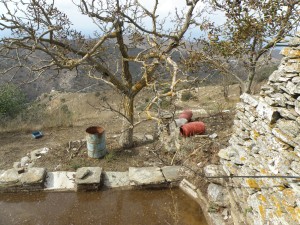To read the post in Greek please click here
3X Awarded Blog on Cultural Travel since May 2012 for the promotion of Cultural Heritage & Ecology. Authentic posts in En/Gr thoroughly edited and researched, with my photos. A traveller’s approach inspired by my vision  to see the world more beautiful, more friendly, safer. A home where everyone may find the space for active love and purposeful creativity.
2012 © Copyright. All rights reserved – Updated October 10, 2017
Many groups are created in Greece lately – I refer to the 2012 when this post was first uploaded – with the widespread realisation that the crisis has not only been installed here, but it is growing. A lot of us no longer want to experience alone our own insecurities. At the same time we are looking for ways to react, to interact and to communicate. People come together to intervene in local issues, to share cultural interests and to give a helping hand. The groups are formed from friends who might not have met since puberty, schoolmates, acquaintances from places of origin, from the neighbourhood, from where we spend our summer holidays.
At the Greek island of Kea or Tzia, in Cyclades, ‘The Friends of Kea’ have organised a tour under the guidance of the archaeologist Niki Vassilikou of the 2nd Ephorate of Byzantine Antiquities.
In October 2012 we have visited the Byzantine Kea: Episkopi – Saint Anna – Kogxi (Alcove) in water – Church of the Twelve Apostoloi near Kato Meria.
Episkopi
Following the road from Ioulida to Pera Meria and Ellinika, we see up on a hill a church next to an old tower rising from the ruins of a monastery. The church is dated from 1651 and it was probably built at the ruins of a Byzantine church.

Santa Anna
Τhis is the most important Byzantine monument of Kea. From the monastery that was still prosperous in the 17th century only the church survives. It is a basilica cross-shaped with a dome (cross-registered, a sample of the transitional type) with murals dated from the last decades of the 13th century.
As in all churches of the post-Byzantine period that lasted from the 9th to the 12 century, we see murals around. Few frescos are visible through the layer of white paint that covers the larger part of the walls. The dome represents the sky where God is depicted at the centre with the prophets, the evangelists, below. Further down are seen scenes from the life of Christ.

Kogxi (Alcove) in the water
From Ellinika we take the dirt road to Agios Pandelemonas passing through forests of oak trees, and a pigsty. The monastery is at the peak of the mountain by the same name.

We leave the cars and start descending the N.W. path leading to the spring. After stepping through a private land we reach Kogxi.
What looks like ruins is an arched alcove of a byzantine church with murals dated around 1200. The murals are seriously damaged. We can distinguish the remains of a bishop’s throne at the lower end, an indication that an important visitor from the clergy had once been here.
The frescos remain unprotected and exposed to the weather and the animals.
Agioi Apostoloi at Katomeria
It is a basilica cross-shaped with a dome (cross-registered, a sample of the transitional type) with murals of the last few decades of the 13th century, like Agia Anna.

Unfortunately no one is officially appointed to guard the monuments. As we learn the history and the narratives of our place, the protection of the environment and the conservation of our cultural heritage becomes a personal issue. Our house does not stop ‘where our door closes’ but includes all that our heart can bear and our eyes can touch.
This blog was not made for financial gains and does not aim to advertise but to promote those elements Ι consider beneficial and interesting for our world and our times.
My personal experience during the research, the writing in the two languages and the photographing, as well as the encounters made and the routes taken in order to enrich and update this blog have shown me once more that the road to create and learn make us connect with stronger bonds to our surroundings.
We perceive more clearly our identity, personal and collective, as well as our personal boundaries in time and space.
Updated October 10, 2017
2012 © Copyright. All rights reserved



Leave a comment